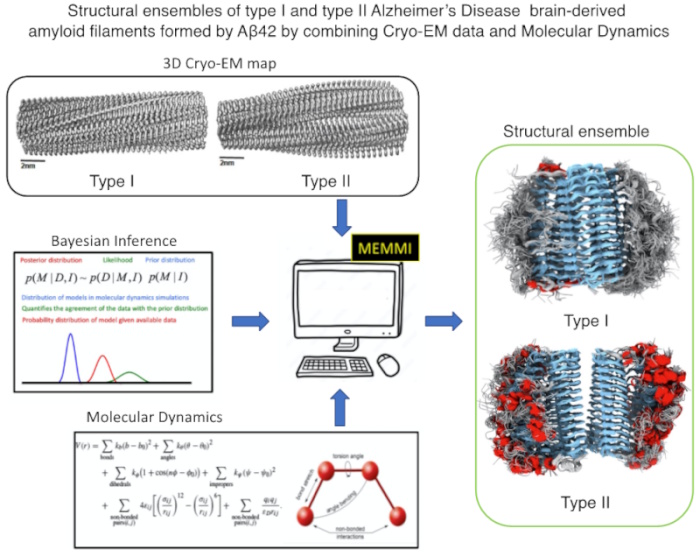New research by Z.Faidon Brotzakis from Skretas Lab concerning the structural dynamics of the Aβ42 Amyloid Filaments in Alzheimer's Disease.
Dr Z. Faidon Brotzakis, senior post-doctoral researcher at the Skretas lab, in collaboration with Dr. Maria Milanesi and Prof. Michele Vendruscolo from the Department of Chemistry of the University of Cambridge, recently published in Science Advances a research article titled “Transient interactions between the fuzzy coat and the cross-β core of brain-derived Aβ42 filaments”. Their study describes a multidisciplinary approach combining cryo-EM data and Molecular Dynamics to characterize the structural dynamics of Alzheimer’s Disease brain-derived amyloid filaments formed by Aβ42.
Several human disorders, including Alzheimer’s disease (AD), are characterized by the aberrant formation of amyloid fibrils. In many cases, the amyloid core is flanked by disordered regions, known as fuzzy coat. The structural properties of fuzzy coats, and their interactions with their environments, however, have not been fully described to date and their structural characterization has proven notoriously difficult due to their intrinsic dynamics. In their study they determined conformational ensembles of two brain-derived amyloid filaments of Aβ42, corresponding respectively to the familial and sporadic forms of AD. This approach, called metadynamic electron microscopy metainference (MEMMI), provides a characterization of the transient interactions between the fuzzy coat and the cross-β core of the filaments by combining cryo-EM data and physics-based atomistic Molecular Dynamics simulations.
By determining the type of interactions between the fuzzy coats and the cross-β cores of the filaments, and how this structural dynamics influences the accessibility of the cross-β cores to the environment, these calculations indicate that the familial AD filaments are less soluble than the sporadic AD filaments, that the fuzzy coat contributes to solubilizing both types of filament and that the diffusion of water and sodium ion molecules slows down near the surface of the amyloid filaments. These results illustrate how the metainference approach can help analyze cryo-EM maps for the characterization of the properties of amyloid fibrils.
https://doi.org/10.1126/sciadv.adr7008
